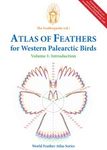![The Sensory Ecology of Birds The Sensory Ecology of Birds]()
Click to have a closer look
About this book
Contents
Customer reviews
Biography
Related titles
Recommended titles
About this book
Birds are renowned for their exceptional vision and the way that this enables them to survive and navigate the world in such a unique way. However, it is now recognised that avian behaviour is guided by information drawn from many different senses which are then used in integrated and complementary ways to answer the many different sensory challenges posed by specific environments and particular tasks.
Understanding how sensory information is used by birds has important applications in conservation, such as providing vital insights into why birds are prone to collisions with structures like power lines and wind turbines, and why so many diving birds become entrapped in nets. A sensory ecology approach suggests how these problems can be mitigated.
The Sensory Ecology of Birds ranges widely across species, environments, and behaviours to present a synthesis that challenges previous assumptions about the information that controls the behaviour of birds. A bird may use a wide range and combination of sensory information that comes from sight, hearing, smell, mechanoreception, taste, and magnetoreception. It may also include specific refinements of senses, such as echolocation and remote touch from the bill. The Sensory Ecology of Birds recognises that there are many complex and subtle trade-offs and complementarities of information between different types of sensory information.
This accessible text will be of interest to a wide ornithological readership, from undergraduates to researchers as well as a broader audience of behavioural ecologists and evolutionary biologists.
Contents
1: Birds' eye views
2: Vision
3: The non-visual senses of birds
4: Touch, taste, and magnetoreception
5: From senses to sensory ecology
6: Birds in the dark: complementary and partial information
7: Birds underwater: a paucity of information
8: What drives bird senses?
9: The sensory ecology of collisions and entrapment
10: Postscript: Conclusions, implications and comment
Customer Reviews
Biography
Graham Martin spent most of his career at the University of Birmingham, ending with a personal chair in Avian Sensory Science, in the School of Biosciences. The focus of his teaching was sensory science and animal behaviour, and he founded and led the only MSc programme in Ornithology in Europe. Over his career he has published papers on the senses of more than 60 species and carried out research in many locations (Antarctica, New Zealand, Africa, South America, Europe). He officially retired in 2011 but remains academically active and continues to publish on the vision of birds, most recently Hawks, Kites and Puffins.
By: Graham R Martin(Author)
296 pages, colour & b/w photos, colour & b/w illustrations
"We often feel we need to take a "bird's eye view". But what exactly how does a bird's eye view the world anyway? We can never truly know, but Graham Martin does his best to help us understand not only how birds see the world, bur hear, touch and smell it too.
Reading this book will change your view of birds forever, they can see and smell better than you probably think, but hear less well. Martin tries to relate things to everyday experience to help us get a better sense of how birds might interact with the world, and is great at the explaining the consequences of bird's sensory systems. Colour vision evolved more to help locate objects than because of the need to see in colour, for instance. I was a bit disappointed that magnetoreception was treated rather cursorily, but it is a fast-moving and controversial, area, so perhaps it was better left alone!
Everyone should read this book, they will almost certainly regard birds with a new sense of wonder and respect, with better insights into what the world is really like for them."
– Rob Robinson, BTO book reviews










































